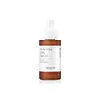What's inside
What's inside
 Key Ingredients
Key Ingredients

 Benefits
Benefits

 Concerns
Concerns

 Ingredients Side-by-side
Ingredients Side-by-side

Water
Skin ConditioningDipropylene Glycol
HumectantPropanediol
SolventAscorbic Acid 5.5%
Antioxidant2,3-Butanediol
HumectantGlycerin
HumectantPanthenol 2.7%
Skin ConditioningAlcohol Denat.
Antimicrobial3-O-Ethyl Ascorbic Acid 1.8%
Skin ConditioningGlycosyl Trehalose
Emulsion StabilisingBetaine
HumectantHydrogenated Starch Hydrolysate
HumectantFerulic Acid
AntimicrobialSorbitol
HumectantPolyglyceryl-10 Stearate
Skin ConditioningTromethamine
BufferingPolyglyceryl-10 Oleate
Skin ConditioningAllantoin
Skin ConditioningPhloretin
AntioxidantSodium Hyaluronate
HumectantCitrus Aurantifolia Oil
CleansingCitrus Aurantium Bergamia Fruit Oil
MaskingLavandula Angustifolia Oil
MaskingDextrin
AbsorbentDisodium EDTA
Serine
MaskingArginine
MaskingCarthamus Tinctorius Flower Extract
Skin ConditioningTheobroma Cacao Seed Extract
AntioxidantCitric Acid
BufferingAnthemis Nobilis Flower Oil
Masking1,2-Hexanediol
Skin ConditioningLimonene
PerfumingLinalool
PerfumingCitral
PerfumingWater, Dipropylene Glycol, Propanediol, Ascorbic Acid 5.5%, 2,3-Butanediol, Glycerin, Panthenol 2.7%, Alcohol Denat., 3-O-Ethyl Ascorbic Acid 1.8%, Glycosyl Trehalose, Betaine, Hydrogenated Starch Hydrolysate, Ferulic Acid, Sorbitol, Polyglyceryl-10 Stearate, Tromethamine, Polyglyceryl-10 Oleate, Allantoin, Phloretin, Sodium Hyaluronate, Citrus Aurantifolia Oil, Citrus Aurantium Bergamia Fruit Oil, Lavandula Angustifolia Oil, Dextrin, Disodium EDTA, Serine, Arginine, Carthamus Tinctorius Flower Extract, Theobroma Cacao Seed Extract, Citric Acid, Anthemis Nobilis Flower Oil, 1,2-Hexanediol, Limonene, Linalool, Citral
Water
Skin ConditioningPropanediol
SolventPentylene Glycol
Skin ConditioningSodium Ascorbyl Phosphate
Antioxidant3-O-Ethyl Ascorbic Acid
Skin Conditioning1,2-Hexanediol
Skin ConditioningAscorbyl Glucoside
AntioxidantTriethyl Citrate
MaskingGlycerin
HumectantPEG-40 Hydrogenated Castor Oil
EmulsifyingPolyglyceryl-10 Laurate
Skin ConditioningTamarindus Indica Seed Gum
Emulsion StabilisingGlyceryl Caprylate
EmollientPhytic Acid
Citric Acid
BufferingSodium Gluconate
Skin ConditioningSodium Hydroxide
BufferingSodium Metabisulfite
AntioxidantTocopherol
AntioxidantSodium Dehydroacetate
PreservativeChlorella Vulgaris Extract
Skin ConditioningGlucose
HumectantCapsicum Annuum Fruit Extract
AntimicrobialHelianthus Annuus Seed Oil
EmollientRosmarinus Officinalis Leaf Extract
AntimicrobialWater, Propanediol, Pentylene Glycol, Sodium Ascorbyl Phosphate, 3-O-Ethyl Ascorbic Acid, 1,2-Hexanediol, Ascorbyl Glucoside, Triethyl Citrate, Glycerin, PEG-40 Hydrogenated Castor Oil, Polyglyceryl-10 Laurate, Tamarindus Indica Seed Gum, Glyceryl Caprylate, Phytic Acid, Citric Acid, Sodium Gluconate, Sodium Hydroxide, Sodium Metabisulfite, Tocopherol, Sodium Dehydroacetate, Chlorella Vulgaris Extract, Glucose, Capsicum Annuum Fruit Extract, Helianthus Annuus Seed Oil, Rosmarinus Officinalis Leaf Extract
 Reviews
Reviews

Ingredients Explained
These ingredients are found in both products.
Ingredients higher up in an ingredient list are typically present in a larger amount.
1,2-Hexanediol is a synthetic liquid and another multi-functional powerhouse.
It is a:
- Humectant, drawing moisture into the skin
- Emollient, helping to soften skin
- Solvent, dispersing and stabilizing formulas
- Preservative booster, enhancing the antimicrobial activity of other preservatives
You might know this ingredient as Ethyl Ascorbic Acid, a more stable version of ascorbic acid.
Like other types of vitamin C, this ingredient has many benefits including reducing wrinkles, skin soothing, dark spot fading, and fighting against free radicals.
3-O-Ethyl Ascorbic Acid interferes with the process of skin darkening, helping to reduce hyperpigmentation. It also encourages the skin to produce more collagen.
Once applied, 3-O-Ethyl Ascorbic Acid is converted to Vitamin C deeper in the skin's layers. This process is slow but makes this ingredient more tolerable for skin.
The optimum pH range for this ingredient is 4 - 5.5
Learn more about 3-O-Ethyl Ascorbic AcidCitric Acid is an alpha hydroxy acid (AHA) naturally found in citrus fruits like oranges, lemons, and limes.
Like other AHAs, citric acid can exfoliate skin by breaking down the bonds that hold dead skin cells together. This helps reveal smoother and brighter skin underneath.
However, this exfoliating effect only happens at high concentrations (20%) which can be hard to find in cosmetic products.
Due to this, citric acid is usually included in small amounts as a pH adjuster. This helps keep products slightly more acidic and compatible with skin's natural pH.
In skincare formulas, citric acid can:
While it can provide some skin benefits, research shows lactic acid and glycolic acid are generally more effective and less irritating exfoliants.
Most citric acid used in skincare today is made by fermenting sugars (usually from molasses). This synthetic version is identical to the natural citrus form but easier to stabilize and use in formulations.
Read more about some other popular AHA's here:
Learn more about Citric AcidGlycerin is already naturally found in your skin. It helps moisturize and protect your skin.
A study from 2016 found glycerin to be more effective as a humectant than AHAs and hyaluronic acid.
As a humectant, it helps the skin stay hydrated by pulling moisture to your skin. The low molecular weight of glycerin allows it to pull moisture into the deeper layers of your skin.
Hydrated skin improves your skin barrier; Your skin barrier helps protect against irritants and bacteria.
Glycerin has also been found to have antimicrobial and antiviral properties. Due to these properties, glycerin is often used in wound and burn treatments.
In cosmetics, glycerin is usually derived from plants such as soybean or palm. However, it can also be sourced from animals, such as tallow or animal fat.
This ingredient is organic, colorless, odorless, and non-toxic.
Glycerin is the name for this ingredient in American English. British English uses Glycerol/Glycerine.
Learn more about GlycerinPropanediol is an all-star ingredient. It softens, hydrates, and smooths the skin.
It’s often used to:
Propanediol is not likely to cause sensitivity and considered safe to use. It is derived from corn or petroleum with a clear color and no scent.
Learn more about PropanediolWater. It's the most common cosmetic ingredient of all. You'll usually see it at the top of ingredient lists, meaning that it makes up the largest part of the product.
So why is it so popular? Water most often acts as a solvent - this means that it helps dissolve other ingredients into the formulation.
You'll also recognize water as that liquid we all need to stay alive. If you see this, drink a glass of water. Stay hydrated!
Learn more about Water